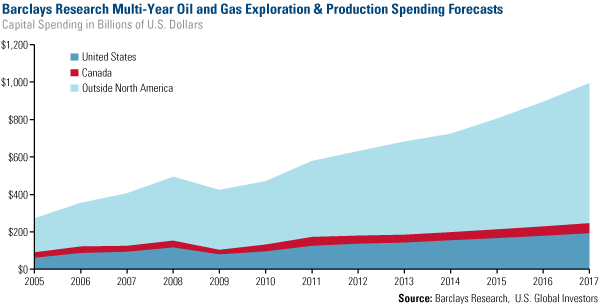Energy and Natural Resources Market Radar (May 26, 2014)
Strengths
- The price of West Texas Intermediate crude oil reached a five-week high of $104.39 on Friday as U.S. crude supplies dropped to 23.4 million barrels at Cushing, Oklahoma, the delivery point for WTI. Stockpiles in the region are at the lowest level since 2008.
- China’s refined copper imports rose to a three-month high of 341thousand metric tons in April, and 5 percent above the prior month and 86 percent higher than last year. Year-to-date, imports of refined copper climbed to 1.3 million metric tons, according to General Administration of Customs.
- Aluminum made a three-week high in London Metals Exchange (LME) trading this week due to lower bauxite imports into China (the world’s largest producer) following Indonesia’s export ban of the aluminum input earlier this year.
Weaknesses
- The spot uranium price fell by $1 to $28 per pound. Ux claims that further delays in the Japanese reactor restarts and ample supplies are contributing to price drop.
- Benchmark iron ore fell to $97.50 per metric ton this week, its lowest level since September 2012 when the steelmaking raw material spent two weeks below $100 a metric ton. Apart from that quick gap down in 2012 ore hasn't traded below $100 at all since 2009.
- The number of natural gas rigs in the U.S. fell from a one-month high due to operating constraints for additional pipeline capacity. U.S. rigs drilling for natural gas have declined by 29 in the past year despite a higher gas price, highlighting improved drilling efficiencies and record volumes.
Opportunities
- An Australian government agency expects to announce a second agreement within three months to fund a renewable energy project at a remote mining operation before the government moves to wind it up. The Australian Renewable Energy Agency, which this week provided money to a Rio Tinto Group plant, had planned to allocate as much as A$300 million ($277 million) to projects that provide solar and wind power to mines and surrounding communities.
- China Daily reports that the rate of coal mine accidents in China has declined over the past decade. The number of work safety accidents declined from 800,000 in 2004 to 300,000 in 2013, as has the number of deaths, from 136,700 to 69,000 over the same period. The death rate per 1 million metric tons of coal has also dropped, from 3.08 to 0.288, a decline of 90 percent. Chinese officials are also strengthening efforts to close down small unsafe coal mines. A government agency estimates that roughly 2,000 small coal mines will be closed this year and in 2015. Currently, there are about 13,000 coal mines in China.
- Japan has been forced to sharply increase expensive energy imports since the shutdown of nuclear-power plants following the 2011 Fukushima accident, with crude oil shipments jumping 200 percent, LNG rising 23 percent and thermal coal increasing 4 percent. The surge reflects Japan's lack of domestic energy sources and its previous reliance on nuclear for 11 percent of primary energy. Hydro and renewable energy, especially solar and wind, now account for 7 percent.
Threats
- According to the U.S. Drought Monitor Index, at least half of Texas, two-thirds of Oklahoma and Kansas, nearly all of New Mexico, Arizona and Nevada, and all of California are in severe-to-exceptional drought. New Mexico’s pasture and range is in the worst condition, with 71 percent rated poor to very poor. California is second with 65 percent in similar condition, followed by Arizona with 54 percent.















